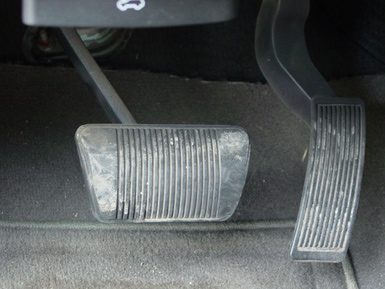What is Emergency Brake Assist?
EBA is the short name for “emergency brake assist”, it is also called “brake assist” (BA), “automatic emergency brake” (AEB), and “auto brake” (as in Volkswagen’s Collision Warning with Auto Brake (CWAB)). It is a system designed to increase braking power if one fails to apply enough pressure to the brake pedal such as in a panic stop. All brake assist systems work same to generate additional stopping power.
The History of Emergency Brake Assist
Automakers regularly perform a variety of tests on their vehicles to determine strengths, weaknesses, safety characteristics, and other factors. In 1992, Daimler-Benz performed a study that utilized its driving simulator in Berlin, which revealed some striking data about simulated panic stops and crashes. In this study, more than 90 percent of the drivers failed to apply enough pressure to the brakes when faced with such situations.
Armed with data from their driving simulator tests, Daimler-Benz partnered with the aftermarket parts company TRW to create the first emergency brake assist system. The technology was first available for the 1996 model year, and a number of other OEMs have subsequently introduced similar systems. TRW, after absorbing LucasVarity in the late 1990s, acquisition by Northropp Grumman in 2002, and subsequent sale to an investment group as TRW Automotive, continues to design and produce brake assist systems for a variety of OEMs.
How Does This Technology Work?
Unlike automatic braking, brake assist technology works solely based on the movement of the vehicle and the brake force applied by the driver. When the driver applies the brakes, the emergency brake assist system examines the speed of the vehicle and the force that was applied. If the system determines that the vehicle is in a panic stop situation, the driver’s brake input is overridden and the full amount of available brake force is applied.
Since the driver is effectively taken out of the loop, the EBA and ABS technologies are able to work together to either stop the vehicle or slow it down as much as possible before a collision occurs. The brake assist system will continue to apply the full amount of available brake force, and the ABS will kick in to pulse the brakes in order to prevent the wheels from locking up.
Is Emergency Brake Assist Necessary?
Without emergency brake assist, many drivers fail to fully appreciate exactly how much force is needed during a panic stop situation, which can lead to avoidable accidents. Additionally, some drivers aren’t aware of the best way to make use of ABS. Prior to the introduction of ABS, most drivers learned to pump the brakes during a panic stop, which effectively increases stopping distance but helps prevent the wheels from locking up. With ABS, however, pumping the brakes is unnecessary.
When full brake force is applied during a panic stop, the pedal will buzz or vibrate as the ABS pulses the brakes much faster than the pedal could be pumped otherwise. If a driver is unfamiliar with this feeling, he may even back off of the pedal, which will further increase the stopping distance. Since emergency brake assist takes over before that occurs, a vehicle equipped with this technology will continue to slow down even if the driver fails to continue braking.
If you’re familiar with the way your vehicle operates during a panic stop, then emergency brake assist isn’t really necessary. For the other 90 percent of us, practicing panic stops can also remove the need for an emergency brake assist system. However, while practicing panic stops can lead to safer driving, it’s vital to only perform such a maneuver in an area where there are no vehicles, pedestrians, or other things that you might hit.
Who Offers Emergency Brake Assist
Daimler-Benz introduced the first emergency brake assist system in the late 1990s, and they continue to use the technology. Volvo, BMW, Mazda, and a variety of other automakers also offer their own take on brake assist technology. Some of these technologies “pre-charge” the brakes so that full braking force can be applied during a panic stop regardless of how hard the driver presses on the brake pedal.
If you’re interested in emergency brake assist, then you might consider asking at the dealership of your favorite make if any of their models include a similar technology.
What Alternative Technologies Exist
Emergency brake assist is a relatively simple technology, and a lot of automakers build it into significantly more complex systems. Another similar technology is automatic braking, which uses a variety of sensors to apply the brakes before an accident can occur. These systems kick in regardless of driver input, and most of them are designed to reduce the severity of a collision when an impact is unavoidable.

What does EBA stands for?
by
Tags:
